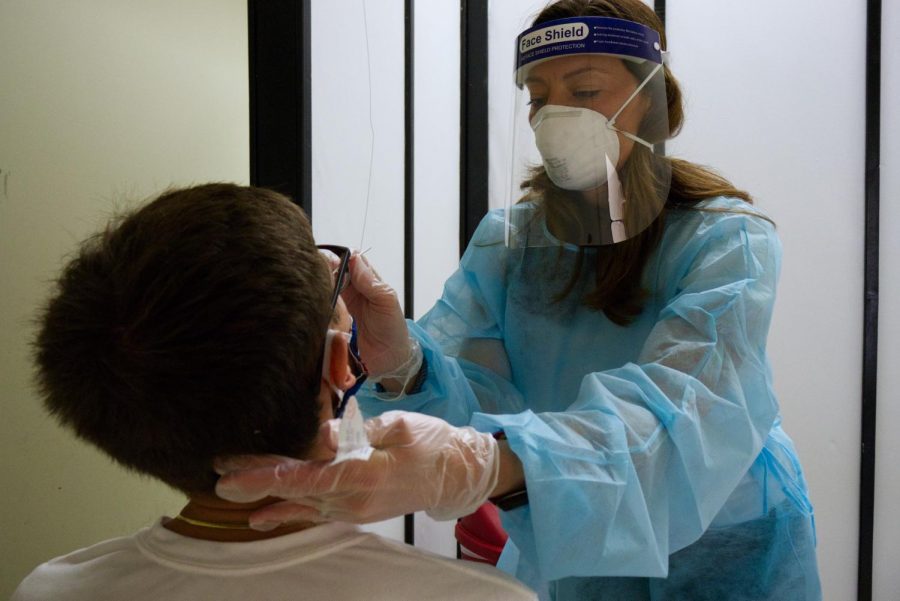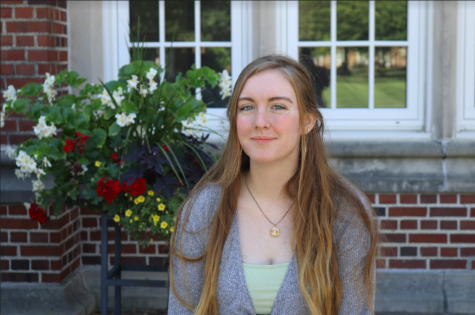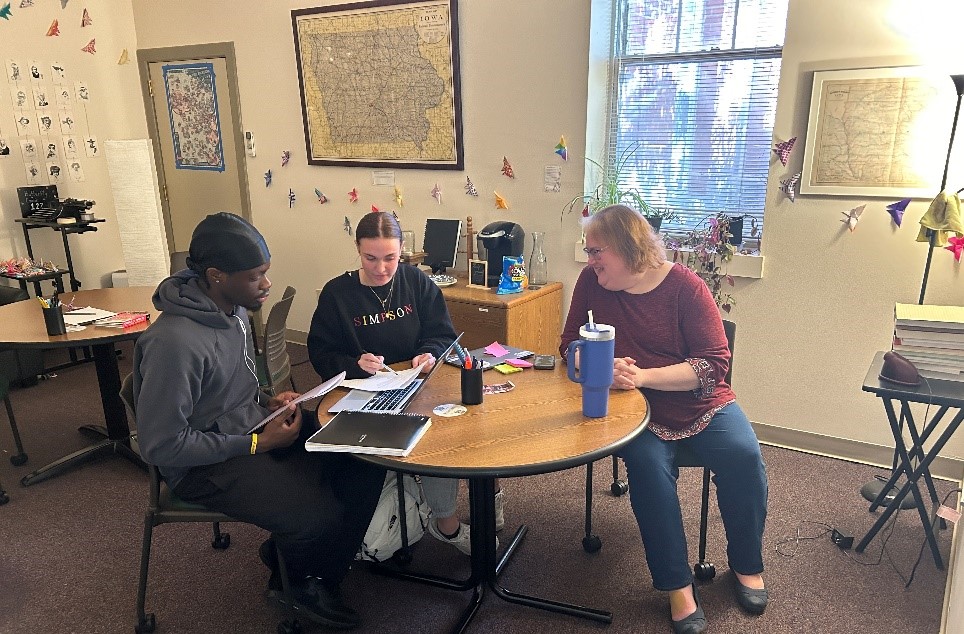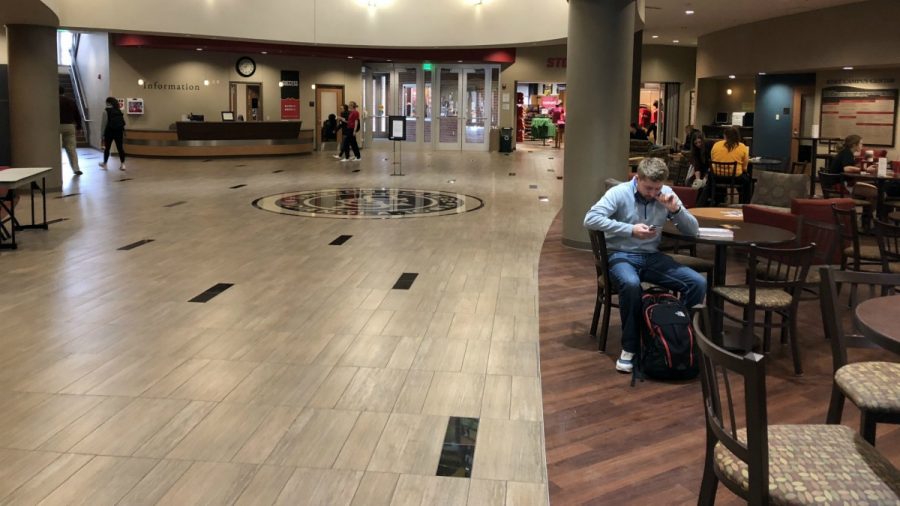Simpson unveils plan for required random COVID-19 testing
Simpsonian file photo – Simpson student gets tested at the Simpson COVID-19 TestIowa site.
January 9, 2021
Athletes are no longer the only students subject to randomized COVID-19 testing, the rest of the student body will be as well.
Several changes have occurred in Simpson’s COVID-19 policy for the spring semester. One of the most significant changes is the implementation of randomized COVID testing for all students, not just athletes. These changes were made in an attempt to more efficiently track the spread of COVID-19 on campus, and modify phases accordingly.
News of these changes was broken to students on Dec. 4 in an email sent to all students from the Crisis Management Team.
“We will begin randomized student COVID testing in the first week of the semester,” the email said. “Because the emerging science is clear that a high percentage of COVID transmission occurs through close contact with asymptomatic individuals, random testing is an important, new component of our plan to keep our entire community as safe and healthy as possible.”
Selection for testing occurs via a randomized number selection program.
Those selected will be notified by Luke Behaunek of their selection the Friday before they are to be tested. Students then have Monday through Wednesday from 1:30-2:30 p.m.
Anyone who tested positive for COVID-19 over winter break should notify nurse Katie Lee as soon as possible to assist with the randomized testing process.
There are a few categories of people who will not be included in the random selection process. These include athletes who are in-season and being tested regularly, students who had COVID within the past 90 days, and anyone who is currently in quarantine, as they are most likely going to be getting tested anyway.
Initially, CMT will randomly select 20% of the student body for testing.
“If we find that in the first couple of weeks, we are finding very low percentages of positive results among asymptomatic students, that would tell us two things,” said CMT chair Heidi Levine. “That would help us make a decision about when we move from orange to yellow, and we would also be able to back down the percentage of students from 20% to 10%.”
The number of students tested will vary depending on the prevalence of COVID-19 on campus.
“If we see the percentage of asymptomatic students who test positive going back up,” Levine said. “Then we would use that both to determine we need to tighten things up a bit more and move back to orange, and it would also be an indicator that we need to conduct more testing.”
Several other smaller changes will occur as well, most of these in line with the new randomized testing.
The orange phase now includes more lenient policies on face-to-face gatherings.
“Based on our experience in the fall, we have realized that we can do structured campus events as long as we are building in safety protocols,” Levine said. “When we’re holding organized events, we can do things to make sure we are maintaining social distance and that we’re wearing masks. That also means that we can do more things face to face. There needs to be approval for them, but CAB will be able to hold more events face-to-face based on what we learned last semester.”
Intercollegiate athletics will also resume in the orange phase.
The other significant protocol change involved the red phase. Triggers for the red phase now include A 15% positivity rate of randomly tested students over multiple days. The red phase transition also includes only switching to remote learning in residence halls, rather than sending all students home.
The yellow protocol hasn’t changed despite accommodations for testing, including a positivity rate of less than 5% over two weeks among randomly tested students.
The possibility of a green phase is also on the horizon as vaccines were released in late Dec. 2020.
“My hope is that over the next few weeks, we will be getting more information about the Iowa and Warren county departments of public health regarding vaccine distribution,” Levine said. “This will make it easier for us to start to get more specific about things like what percentage of the campus community would need to be vaccinated. And also, would we be able to do vaccinations on campus? Right now, we just don’t have enough information from the Iowa department of public health about beyond frontline and health workers, how will they start pushing the vaccine out more widely.”
Campus nurse Katie Lee received her vaccine on Jan. 4, which was included in another CMT update. The update also urged students to consider being vaccinated when able.
“The Crisis Management Team encourages each of you to strongly consider receiving the COVID-19 vaccine when available,” Levine said. “As a community, we all did very well in the fall at keeping our numbers relatively low through all our mitigation and safety protocols. This one additional step — vaccination — will help protect us all and, possibly, eradicate this virus.”
The last change involved the moodle-check-ins, which have been modified to include a more thorough list of symptoms and a question that asks whether students have been in contact with anyone who tested positive in the last 14 days.
“In the original moodle, we were focused on the symptoms that are kind of the tell-tale signs of COVID and not of other things,” Levine said. “But there are a whole host of symptoms that people have that are also symptoms of another thing, like a fever or congestion or nausea. Most of the people we have tested who had those kinds of symptoms did not come back as positive because they had something else. We realized there are so many people who tested positive for COVID that have those low-level symptoms.”
Check-ins are currently open until noon but will be adjusted to close at 10 am once the semester begins. The moodle-check-ins reopened on Jan. 4 and will continue into the semester.







